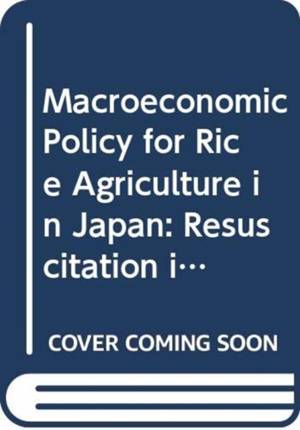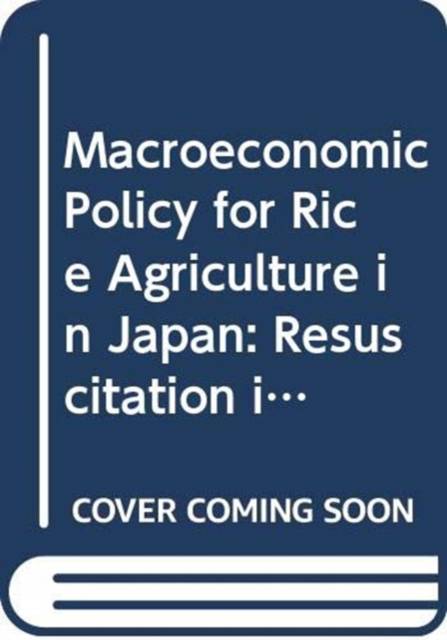
- Afhalen na 1 uur in een winkel met voorraad
- Gratis thuislevering in België vanaf € 30
- Ruim aanbod met 7 miljoen producten
- Afhalen na 1 uur in een winkel met voorraad
- Gratis thuislevering in België vanaf € 30
- Ruim aanbod met 7 miljoen producten
Zoeken
Macroeconomic Policy for Rice Agriculture in Japan
Resuscitation in the Liberalized Competitive Market
Hirotada Kohno
€ 148,95
+ 297 punten
Omschrijving
This book focuses on a very important and still controversial topic in Japan, namely, whether a future exists for Japanese farmers, especially rice-producing farmers. Dealt with here is the prospect along with a personal view of the course that Japanese agriculture should follow, that is, a prescription for enriching the international competitiveness of the agricultural sector, especially rice production, in a more market-oriented economy. Toward restoration of Japanese agriculture, prescriptions are pursued from different aspects. One is the planting schedule of various farm products at the micro level such as the crop rotation system, derived from the mixed-integer dynamic programming model. Another is a macroeconomic policy to enhance the export of the restored 2 million tons of rice by the abolition of the policy of reducing rice acreage--a policy considered unreasonable by some. The path that agriculture in Japan should take has been argued by scholars and experts in related fields. However, no argument has been based on scientific and objective proof. Some applications of mixed-integer dynamic programming model are shown, which are very useful for policy makers as well as graduate students in the field of economic policy (esp. regional & dynamics) and dynamic agricultural planning (esp. planting & comprehensive management).
Specificaties
Betrokkenen
- Auteur(s):
- Uitgeverij:
Inhoud
- Aantal bladzijden:
- 180
- Taal:
- Engels
- Reeks:
- Reeksnummer:
- nr. 120
Eigenschappen
- Productcode (EAN):
- 9784431552321
- Verschijningsdatum:
- 13/06/2026
- Uitvoering:
- Hardcover
- Formaat:
- Genaaid
- Afmetingen:
- 155 mm x 235 mm

Alleen bij Standaard Boekhandel
+ 297 punten op je klantenkaart van Standaard Boekhandel
Beoordelingen
We publiceren alleen reviews die voldoen aan de voorwaarden voor reviews. Bekijk onze voorwaarden voor reviews.








